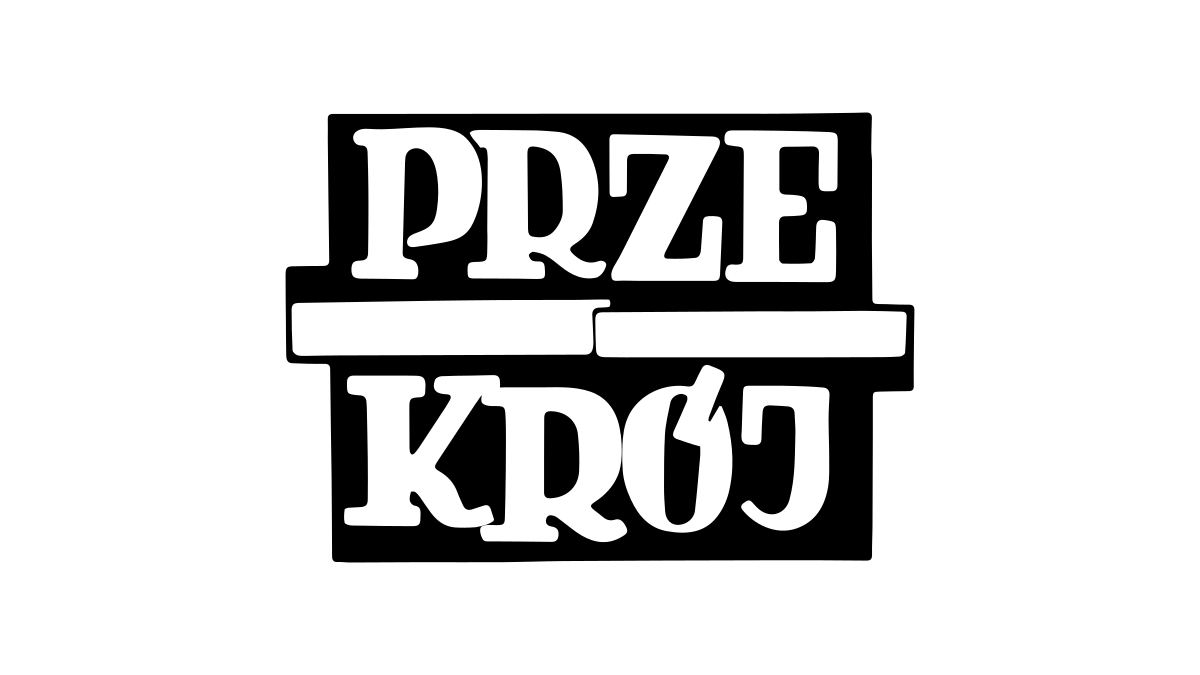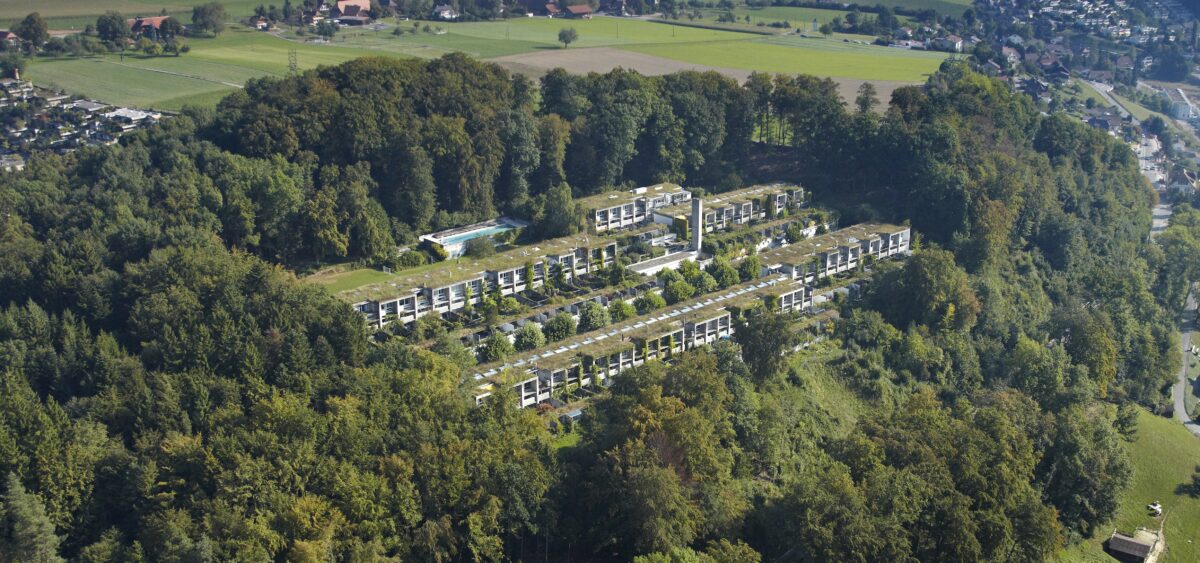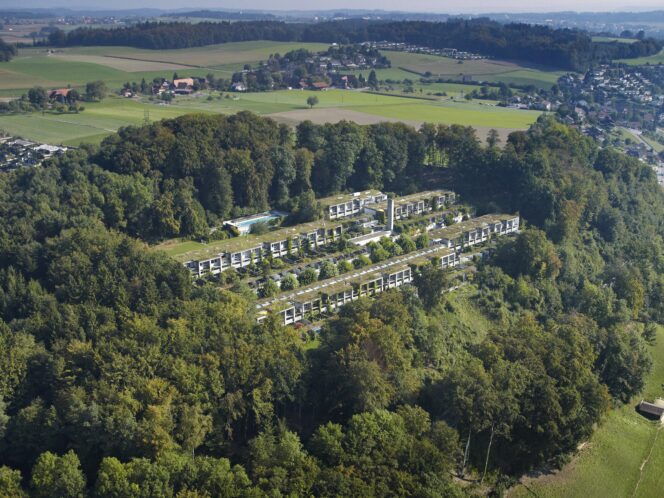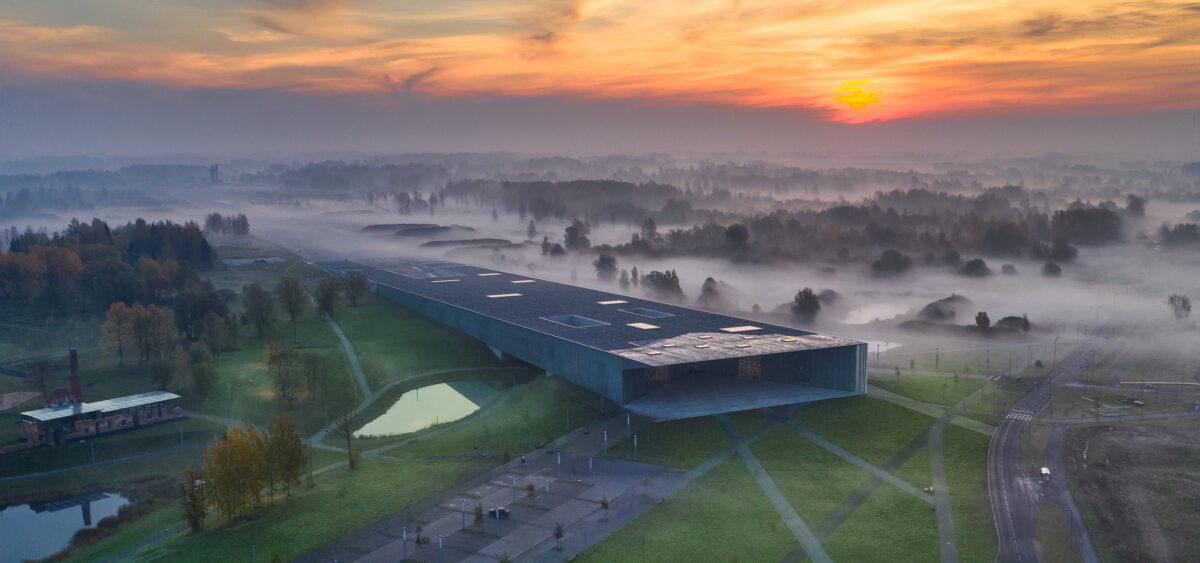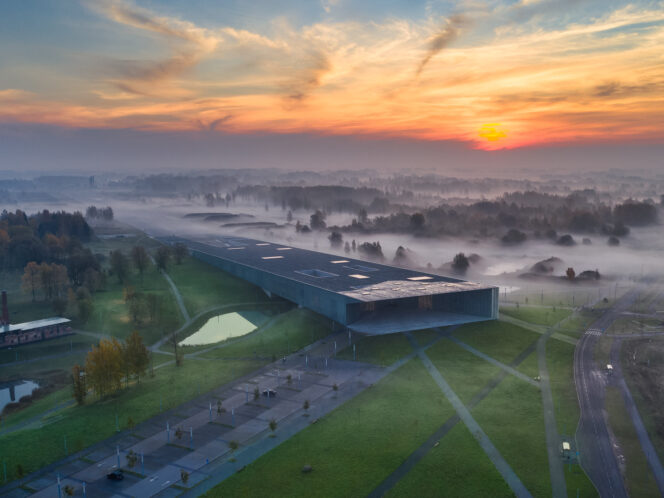
Coming from the centre of Bern, you need to head north towards Halenbrücke, a bridge connecting the steep banks of the Aare river. From here, you can see the outline of the housing estate between the heavily forested hills. After turning from the main road into a small street, you can clearly see the first concrete walls of Halen.
In modern photos it looks like a ruin. It is particularly depressing in winter, when all the greenery surrounding the buildings is reduced to bare branches. When I tell others about this place, the reaction is always the same: “What are you showing me? Does anyone live here at all?” Meanwhile, the symbiosis between nature and architecture is so deep that here, the buildings play a tertiary role. The composition of the landscape comes first, then the charms of nature that create it; the architecture comes last. The mimesis principle is preserved.
A community with principles
79 housing units were built over the sloping ground that is 180-metres long and almost 60-metres wide. They are arranged along three
